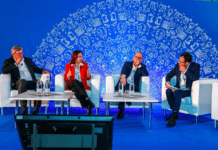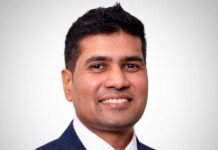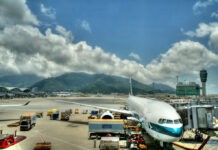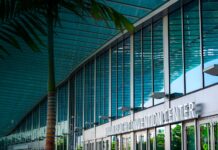Indonesia has the perfect combination of inputs driving growth in tissue manufacture, from a lifted GDP to an expanding middle class. Here, Phillip Lawrence explains why the country is one to watch
Some people have called Indonesia the least known nation in the world. Others have said it is an unlikely nation. For many years Indonesia did not play a significant role in the global economy. That has now changed dramatically in many ways.
The President of Indonesia Susilo Bambang Yudhoyono (SBY) today struts the world stage and is courted by governments and international leaders. He recently completed successful visits to North America, Europe and the UK. The Indonesian economy is shifting from a purely extractive industry base to producing products that are beginning to be produced quite well. The government focus on education and skills development is resulting in upstream, value-added industries and businesses that can bring much greater foreign income earning to the nation. At the same time lifting the GDP and driving internal consumption is helping create an expanding middle class.
Nowhere is the impact of these changes more evident than in the tissue sector. Indonesia has the perfect combination of inputs driving growth in the tissue manufacturing industry. The country is blessed with the perfect climate for rapid growth forests and the yield per hectare of eucalypt and acacia trees is massively greater than in the cold climate slow growth conditions. It is literally possible to watch a small tree growing because the rate of growth is so fast. There is high rainfall and long hours of year-round vertical sunshine. Now after a number of years of industry expansion the supply of wood should soon be total from rapid growth plantation sources.
Indonesia has a ready workforce relatively evenly spread out across the entire nation. The government has been focusing a great deal of effort over recent years on education and skills development. This has been the number one national weakness in the past. When Indonesia gained independence from the Dutch in 1948 there was not one university in the country, now there are many. Addressing the community knowledge base is essential in taking Indonesia out of developing nation status in future years.
The sustained economic growth on the back of the resource sector has resulted in an increased number of middle class consumers. The country is a significant supplier to China’s coal needs, and is also an oil exporter nation. Both of these areas are bringing important tax earnings to the government which is now one of the few almost debt free countries in the world. As a result of the Asia Financial Crisis about a decade ago the internal financial structure of the country changed so that national wealth is spread out to local and remote communities. Were Indonesia was once considered the most centralised, government controlled nation on earth, today it is the most decentralised nation. This means regional areas are benefiting from the natural resource business.
The final key point is that Indonesia is placed fortuitously in the most geopolitically advantageous place on the globe that you could imagine. Some economists have called Indonesia the “Gateway.” It spreads from the bottom of India to the top of northern Australia. Almost 80% of shipping that goes from the western world to Asia must pass through the Indonesian archipelago.
Indonesia is a country rich in natural resources, with an educated population and a stable democracy in the middle of the world’s busiest trade route. The paper industry in Indonesia has been through a remarkable twenty years of development and change. Effectively the paper industry was born out of the realisation that Indonesia could be earning a great deal more foreign income if its economy were based on value added or upstream industries. The tissue manufacturing area of paper making is a perfect fit for Indonesia and the entire Asian region. As a result it is likely the area of business is going to experience long term stable growth for many years to come.
Tissue consumption in Indonesia is well above the international average growth rate which currently is around 4%. Indonesia is probably just over 7%, but accurate internal figures on the market are difficult to find. The export market is, however, Indonesia’s greatest opportunity, given the access to shipping lines and nearby mature and high growth markets. Also because of the low cost base Indonesian products are likely to find increasing sales opportunities in more remote regions such as North America and Europe. The quality of their product will certainly more than satisfy the needs of the consumers in those markets.
Environmental issues have plagued the Indonesian manufacturers for many years, in particular the largest Indonesia producer Asia Pulp and Paper (APP). After years of battles with local and international
NGOs, the company has recently announced a road map for sustainability which includes no longer relying on natural forests for wood fibre. This is a significant change and one which has been warmly, if cautiously, welcomed by green groups around the world.
Significantly, the manner of the announcement, by APP chairman Teguh Wijaya, was in itself a rarity in Asian business where the head of a company would not normally take the responsibility for such a significant statement. The usual process would see an announcement by middle management. That marks an interesting change in the way a large Indonesian business operates, and perhaps a new era of sustainability for the industry in Indonesia? It is a common sight in the western world to see business leaders take centre stage for important announcements, some embrace the role with such passion they are elevated to rock star status. It was a significant event in the Indonesia context and so it is worth watching to see how the company adheres to the commitment over time.
Likely the one missing link for Indonesian manufacturers of tissue product will be the inability to gain FSC certification. The limitation set by FSC that only forestry settled prior to 1994 can be certified does not bode well for the new generation of rapid growth and high yield plantations in Indonesia. Unless there is a sudden change with the guidelines used by the FSC then there is no hope that Indonesian firms can secure the FSC label. However, the national certification body in Indonesia has now joined the PEFC international group and likely within the next year or two most plantation forestry in the nation will fall under the equally robust PEFC certification. This will bring the Indonesian tissue manufacturers in line with their international competitors.
Phillip Lawrence is doing PhD research on the Asian forestry, pulp and paper sector at Sydney University, Australia. He is a consultant and speaker for several companies in the sector.

































